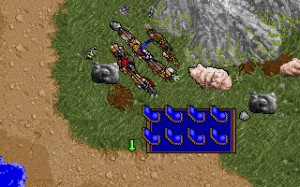The Lensman was rocked to the heels, but did not show it. Instead, he took the captain’s pen – his own, as far as Willoughby was concerned, could have been filled with vanishing ink – and wrote George Olmstead’s name in George Olmstead’s bold, flowing script.
-E. E. Smith, First Lensman
In 1950, when Doc Smith wrote the sci-fi novel First Lensman, disappearing ink was still reasonably hi-tech: it had been a major espionage tool as recently as World War II. Now it seems a little quaint and dated, which means it’s time for it to make the transition from SF to fantasy.
Not only is disappearing ink a good trick for a RPG character’s reportoire, ink itself seems like a fruitful avenue for new magic items, untapped by the standard D&D magic-item list.
Here are some ink bottles that might be available at the local apothecary. Each ink bottle can be used to write a dozen pages.
Disappearing ink: Twelve hours after you write with it, the writing disappears. Great for messages that must not fall into the wrong hands, and signing contracts that you don’t want to keep. It’s entirely alchemical so it doesn’t radiate magic.
Burning ink: Twelve hours after you write with it, the ink catches fire, burning the paper it’s on, along with anything flammable nearby, unless it’s caught. Even better for signing contracts you don’t want to keep. It radiates faint magic: a suspicious notary/wizard using Detect Magic will have to make an Intelligence Check to notice it.
Exploding ink: As soon as the ink is dry, any writing turns into Explosive Runes. Great for wizards on the go. The ink and the runes radiate strong magic.
Courtier’s ink: As you write, the words re-form behind your pen into elegant phrases and flowery compliments. Your handwriting is also slightly improved. Grants your letter a +3 to Charisma checks to anyone who is impressed by well-expressed sentiments. This is widely used at courts, and too expensive for the starving poets who covet it so very, very much.
Sewer Ink: The reverse of Courtier’s Ink turns any writing into a collection of shocking profanity, ill-turned phrases and deadly insults. It applies a -6 to Charisma checks. Unlike Courtier’s Ink, the writing does not re-form for twelve hours, and your handwriting is not altered. This ink is most often used for practical jokes and venomous plots.
Poison Ink: This oldie but goodie causes pages to slightly cling together so that readers must moisten their fingers to turn the pages. It’s also a deadly poison: twelve hours after a careless reader ingests the ink, he or she must make a saving throw or take 3d6 damage and be helpless for the next twelve hours. This saving throw is repeated every 12 hours until a successful save is made.
Characters may make a hard Wisdom or Intelligence check, or an easy History, Pulp Literature, Rare Poisons, Dastardly Plans, or other appropriate skill check to realize that the pages are poisoned.
Poison ink can also be used as a normal poison, on weapons or in food.









